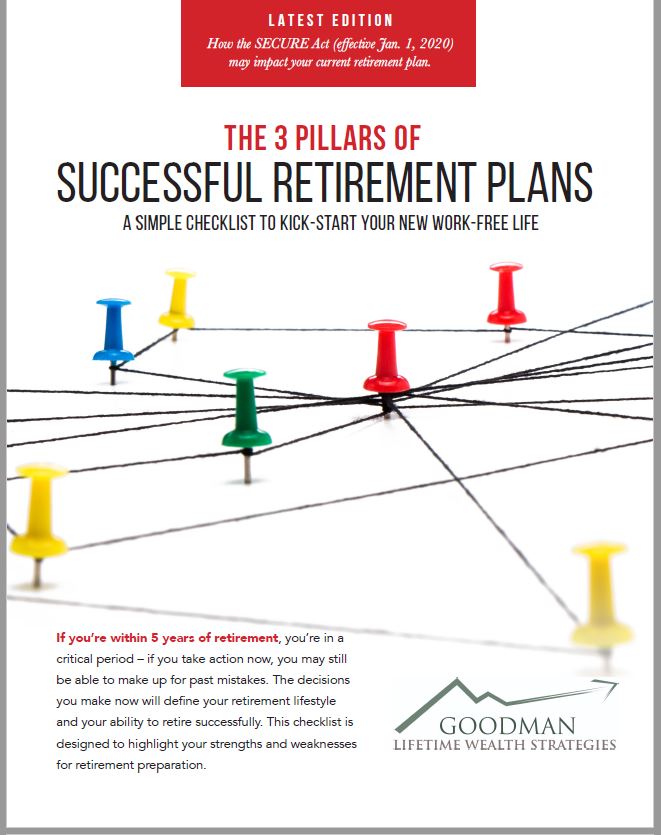It has been a rough first 6 months of the year in the financial markets…
I recently shared some of my thoughts around the general market environment, considerations and opportunities looking forward for investors, you can access the recording through the link below.
https://www.youtube.com/watch?v=7zcFUjtz3DU
In this month’s recap: Stocks fell as growing recession talk prompted investors to manage risk in their portfolios.
U.S. Markets
Stock prices were lower in June as recession talk prompted investors to manage risk in their portfolios.
The Dow Jones Industrial Average lost 6.71 percent, while the Standard & Poor’s 500 Index fell 8.39 percent. The tech-heavy Nasdaq Composite dropped 8.71 percent.1
Focus on Inflation
Markets grappled this month with an uncertain economic outlook. After a descent in the first half of June, markets were further rattled by the May inflation report which showed an 8.6 percent increase, year-over-year, in the Consumer Price Index (CPI). Led by a 34.6 percent increase in energy prices and a 10.1 percent rise in food prices, making this the highest rate of increase since December 1981.2
The unwelcome CPI number raised concerns that the Fed would need to become more aggressive with its rate hikes, making the prospect of a recession more likely.
Fed Raises Rates
Stocks briefly rallied after the Fed announced a hike in short-term interest rates of 75 basis points. All Fed members said they expected rates to rise to at least 3 percent by year-end, with half anticipating that rates may rise to 3.375 percent.3
Powell’s Committment
On June 22, Fed Chair Powell told Congress that the Fed was committed to combating inflation. Stocks surged in the third week of the month on the premise that an economic slowdown may allow the Fed to be less aggressive with future rate hikes. But the enthusiasm faded in the final days of trading as choppy price action led to declines to close out the month.
Sector Scorecard
All industry sectors were lower in June, with declines in Communications Services (-9.82 percent), Consumer Discretionary (-11.04 percent), Consumer Staples (-3.08 percent), Energy (-17.91 percent), Financials (-11.14 percent), Health Care (-3.02 percent), Industrials (-7.77 percent), Materials (-14.41 percent), Real Estate (-7.64 percent), Technology (-9.48 percent) and Utilities (-5.65 percent).4
What Investors May Be Talking About in July
Earnings season begins in early July, providing investors with key insights into the health of American consumers. Companies will also communicate how they are navigating an increasingly challenging economic landscape.
Since the start of 2022, stocks have become less expensive on the basis of their price/earnings (P/E) ratios. When the stock market hit an all-time high on January 3, 2022, the forward P/E ratio for the S&P 500 index was 21.4. The 25-year average P/E sits at 16.5, for the period ended May 12, 2022. At the end of June 2022, the average forward P/E was 15.9.5,6
Each quarter, the degree to which the stock market responds to corporate earnings varies. But as investors grapple with a cloudy outlook, company reports over the next four to six weeks may serve as an important barometer for measuring the nation’s economic health and evaluating stock prices.
World Markets
Slowing economic activity and rising inflation dragged overseas markets lower, with the MSCI-EAFE Index sliding 8.07 percent last month.7
Major European markets were under pressure this month, as they faced increasing economic and geopolitical headwinds. Italy fell to -12.86 percent, while Germany dropped to -10.95 percent. Meanwhile, France dipped to -8.31 percent, as Spain decreased to -7.63 and the U.K. to -5.77 percent.8
Pacific Rim markets were lower with the exception of Hong Kong, which rose 2.08 as China emerged from its COVID lockdown. Korea fell -14.17 percent, Australia -9.31 percent and Japan -4.93 percent.9
Indicators
Gross Domestic Product: The final estimate of first quarter GDP growth was revised lower to -1.6 percent.10
Employment: Employers added 390,000 new jobs in May, which represented a slower pace than previous months despite a healthier number than expected. The unemployment rate remained unchanged at 3.6 percent, while wage growth moderated from 5.5 percent in April to 5.2 percent in May.11
Retail Sales: Retail sales fell 0.3 percent in May, perhaps reflecting the squeeze from higher costs and interest rates. Excluding gasoline sales, retail sales fell 0.7 percent.12
Industrial Production: Output at the nation’s factories, mines, and utilities rose 0.2 percent, the fifth consecutive monthly increase.13
Housing: Housing starts fell to their lowest level in over a year, declining 14.4 percent in May. Single-family homes dropped 9.2 percent, while multiple family housing sagged 26.8 percent.14
Sales of existing homes fell 3.4 percent in comparison to April and were 8.6 percent lower than a year ago. It was the weakest reading since June 2020.15
New home sales posted their first gain this year, rising 10.7 percent in May.16
Consumer Price Index: Consumer prices rose 8.6 percent from May 2021 levels, the highest rate since December 1981. Energy (+34.6 percent) and food (+10.1 percent) prices led the year-over-year increase in the Consumer Price Index (CPI). On a month-to-month basis, the CPI rose well above the consensus estimate of 0.7 percent to a full 1 percent.17
Durable Goods Orders: New orders for long lasting goods rose 0.7 percent in May, making it the seventh out of the last eight months that orders have increased.18
The Fed
The Federal Reserve announced a 0.75 percent hike in the federal funds rate. It was the biggest rate increase since 1994.19
The announcement was made following the June 14–15 meeting of the Federal Open Market Committee (FOMC). The FOMC also indicated new rate projections, showing that all members expect rates to rise to at least 3.0 percent by year-end and half the members expecting rates to rise to 3.375 percent.
The 75-basis-point rate increase was higher than earlier Fed guidance of a 50-basis-point increase and a response to recent inflation data and rising inflationary expectations.19
| MARKET INDEX | Y-T-D CHANGE | June 2022 |
| DJIA | -15.31% | -6.71% |
| NASDAQ | -29.51% | -8.71% |
| S&P 500 | -20.58% | -8.39% |
| BOND YIELD | Y-T-D | June 2022 |
| 10 YR TREASURY | 1.46% | 2.97% |
Sources: Yahoo Finance, June 30, 2022.
The market indexes discussed are unmanaged and generally considered representative of their respective markets. Individuals cannot directly invest in unmanaged indexes. Past performance does not guarantee future results. U.S. Treasury Notes are guaranteed by the federal government as to the timely payment of principal and interest. However, if you sell a Treasury Note prior to maturity, it may be worth more or less than the original price paid.



Leave a Reply